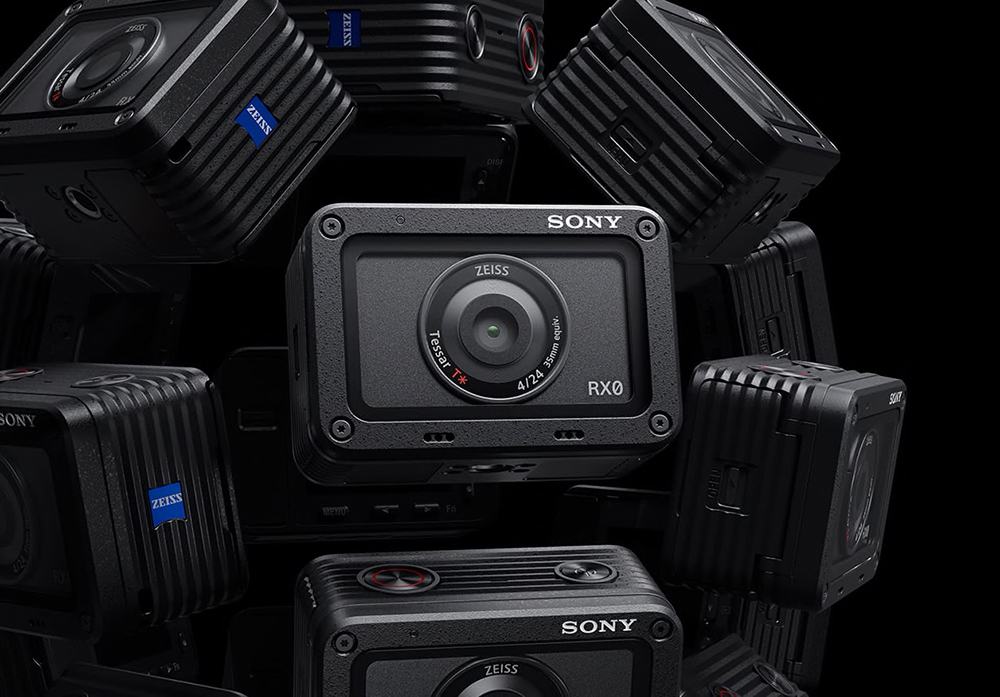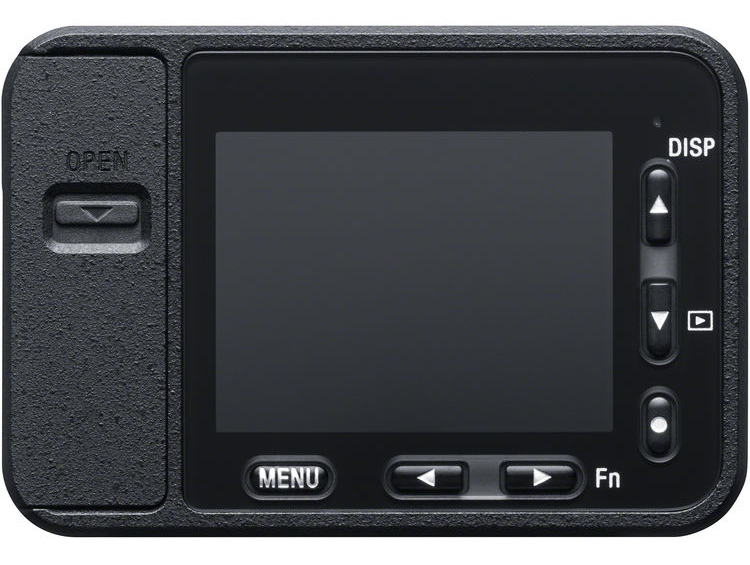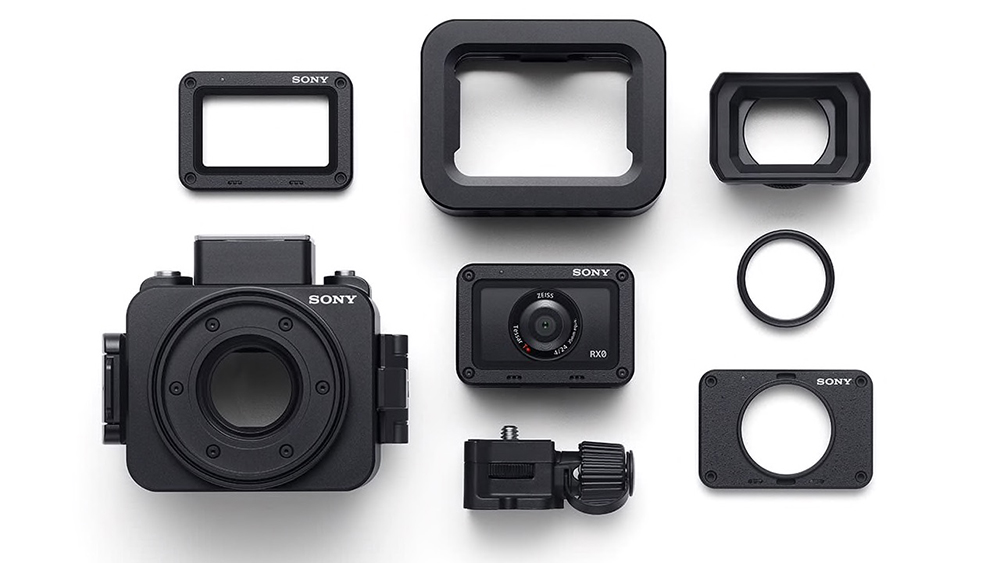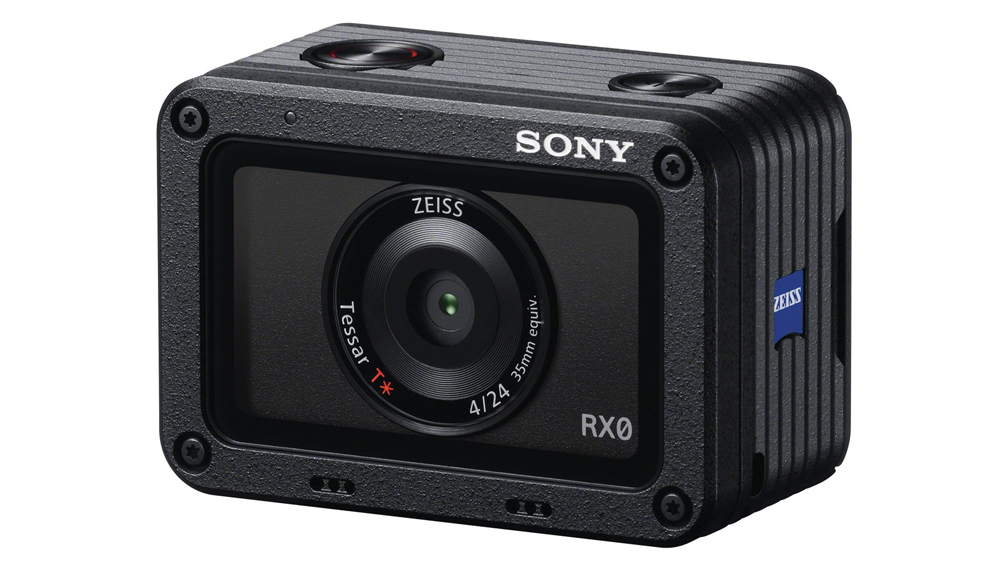Shockproof, Waterproof Digital Camera Fits in the Palm of Your Hand
Review by Erik Vlietinck
The Sony DSC-RX0 is equipped with a one-inch, 21-megapixel (15.3 effective) Exmor RS CMOS sensor and a fixed Zeiss 24mm F4 wide-angle lens. It has a shutter that goes all the way up to 1/32,000, ISO levels that max out at 12,800 in video mode and 25,600 in still mode, and slow-motion capabilities that extend to 960 fps in 1080p/24. It supports recording to XAVC S (in 8-bit/4:2:0 subsampling at 50-Mbit/s), AVCHD V2.0, and MP4. Images can be shot in RAW and JPEG.
The RX0 has a crush resistance of 2000 N, an impact resistance that allows you to drop it from 2 meters high, and a waterproof certification for depths of up 10 meters without underwater housing—yet it’s not an action camera. Weighing only 110 g, it’s a tiny system camera with a fixed aperture. It can handle specialized setups, such as the ability to control up to five RX0 cameras if you install PlayMemories Mobile on your device. For true Hollywood-grade filmmaking, there’s the ability to control up to 15 RX0s with the addition of an FA-WRC1M wireless radio commander.
All this power allows you to set up n-camera array panels, 360 rigs, and bullet camera setups. In such setups, the RX0 operator can synchronize all of the cameras together remotely.

Less exotic usage scenarios include shooting time-lapse (up to 16 fps) images in environments where a “proper” camera would intrude—be it the opera or a violent street protest.
The RX0 has toughened glass on the front and back, and a 1/4″ tripod socket. Once it has been switched on, the tiny, but sharp LCD display shows you an abundance of information.
Around the LCD display, you have the menu, horizontal and vertical scroll, and Enter buttons—all rather fiddly to operate. Once you’re in the 23-page menu system, it will look like you’re handling the settings of a full-blown DSLR camera on a very small screen. There’s one minor criticism with regard to handling the RX0: You need a trip to the menu for almost every change in your setup.

Beneath the surface lies access to S-Log2 gamma settings and 4:2:2 4K video out. Less impressive is battery life: only 35 minutes or 240 images of actual shooting time, but you can also power the RX0 from the mains via the USB port.
I tested the camera’s noise levels by setting up lighting at 75, 180, 450, and 700 lux, and then shooting photos/video clips at ISOs of 400, 1600 (minimum Slog-2 setting), 3200, and 6400 in each lighting scenario at a distance of 50 cm. Some combinations unexpectedly generated more noise than others, so it pays to experiment.
While letting the camera decide its settings is easiest, you can control much of the RX0 yourself; for example, you can set white balance as with any DSLR, but you’ll need sufficient lighting to get a proper setting. I found it better to work with a light meter.

Autofocus is very fast and accurate. You can set the focus manually with the help of customizable focus peaking. Preset Focus mode lets the RX0 automatically focus on a subject that’s further away than 1 meter, and when you also activate “NEAR” focusing range, it selects a subject within the 1-meter range.
In my testing of the RX0, images were tack sharp and colors were saturated.
I couldn’t resist trying the maximum photo shutter speed of 1/32,000, so I set up the RX0 with a 1,100-lumen continuous light at a distance of 50 cm to see if it would freeze motion as well as what you’d get working with a flash. The result was a pitch-black background with the moving object barely visible! ■






